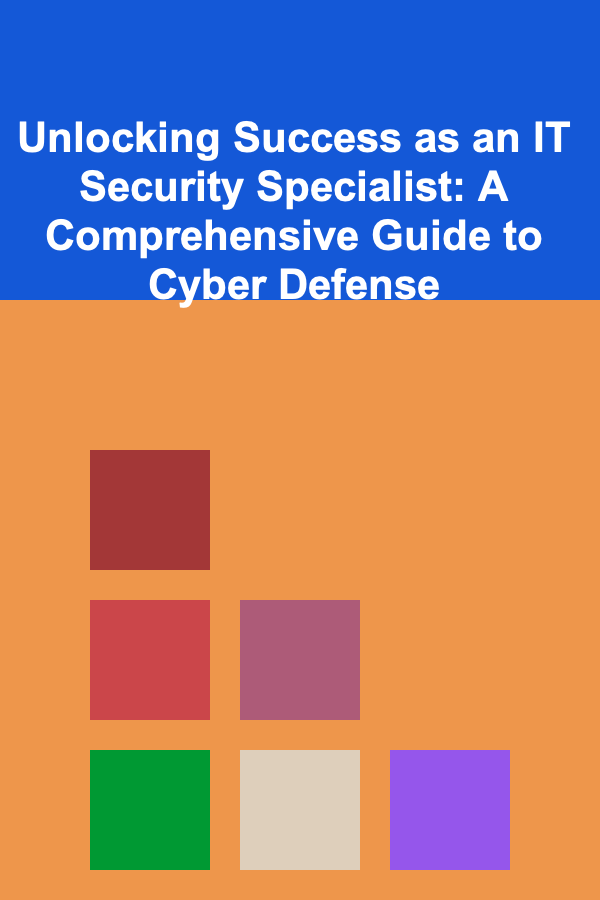
Understanding the Impact of Quantum Computing on Crypto
ebook include PDF & Audio bundle (Micro Guide)
$12.99$7.99
Limited Time Offer! Order within the next:

The intersection of quantum computing and cryptography is a topic of growing concern and intense research. While quantum computing promises revolutionary advancements across various fields, its potential impact on existing cryptographic systems, particularly those underpinning cryptocurrencies, is significant and potentially disruptive. This article delves into the intricacies of this relationship, exploring the underlying principles, potential vulnerabilities, mitigation strategies, and the ongoing race to develop quantum-resistant cryptography.
The Fundamentals: Cryptography and Its Reliance on Computational Hardness
At its core, modern cryptography relies on the computational difficulty of certain mathematical problems. These problems, deemed "hard" for classical computers, form the basis for securing sensitive data, authenticating transactions, and ensuring the integrity of digital communications. Common examples include:
- Integer Factorization: Decomposing a large composite number into its prime factors. RSA encryption, a widely used public-key cryptosystem, relies on the presumed difficulty of this problem.
- Discrete Logarithm Problem (DLP): Finding the exponent
xthat satisfies the equationg^x^mod p = y, whereg,y, andpare known. Elliptic Curve Cryptography (ECC), prevalent in Bitcoin and other cryptocurrencies, leverages the difficulty of the DLP on elliptic curves.
These cryptographic algorithms are designed such that breaking them using brute-force methods on classical computers would require an infeasible amount of time and computational resources. The security of these systems, therefore, hinges on the assumption that these problems remain intractable for classical computers.
Quantum Computing: A Paradigm Shift in Computation
Quantum computing represents a fundamentally different approach to computation than classical computing. Instead of bits that represent either 0 or 1, quantum computers utilize qubits . Qubits can exist in a superposition, representing 0, 1, or a combination of both simultaneously. Furthermore, quantum computers leverage phenomena like entanglement , where multiple qubits are linked together in a way that their fates are intertwined, and quantum interference, which allows for certain computational paths to be amplified while others are suppressed. These unique properties enable quantum computers to tackle specific types of problems with unprecedented speed and efficiency.
The key algorithms that pose a threat to classical cryptography are:
- Shor's Algorithm: Designed to efficiently factor large integers. A quantum computer running Shor's algorithm could break RSA encryption in a matter of hours, rendering it effectively useless.
- Grover's Algorithm: Provides a quadratic speedup for searching unsorted databases. While not as devastating as Shor's algorithm, Grover's algorithm can reduce the key size of symmetric-key cryptography (like AES) by half, requiring a doubling of the key length to maintain the same level of security.
The development of sufficiently powerful quantum computers capable of executing these algorithms poses a direct threat to the security of current cryptographic systems. While the current state of quantum computing is still in its early stages, significant progress is being made, and the threat is no longer a distant possibility.
The Impact on Cryptocurrencies: A Clear and Present Danger
Cryptocurrencies rely heavily on cryptography to secure transactions, verify identities, and maintain the integrity of the blockchain. The potential for quantum computers to break these cryptographic systems has profound implications for the entire cryptocurrency ecosystem.
1. Vulnerability of Public-Key Cryptography
As mentioned earlier, RSA and ECC are widely used in cryptocurrencies. RSA is often used for key exchange and digital signatures, while ECC is the foundation for securing transactions in Bitcoin, Ethereum, and many other cryptocurrencies. Shor's algorithm directly targets the mathematical problems underlying these algorithms.
If a quantum computer could break the ECC used in Bitcoin, it could potentially:
- Forge Transactions: An attacker could generate fraudulent transactions, spending funds from other users' wallets without their authorization.
- Spoof Identities: An attacker could impersonate other users, gaining access to their accounts and potentially manipulating the blockchain.
- Compromise Private Keys: An attacker could derive private keys from public keys, gaining complete control over the associated cryptocurrency holdings.
While Bitcoin's design incorporates certain measures that mitigate the immediate impact of a compromised key (e.g., using a new key for each transaction), the potential for long-term damage is substantial. The same vulnerabilities apply to other cryptocurrencies that rely on ECC.
2. Implications for Blockchain Security
The immutability of the blockchain, a key feature that ensures the integrity of transactions, is also potentially at risk. While altering historical transactions on a well-established blockchain like Bitcoin would be exceptionally difficult, even for a quantum computer, the ability to compromise future transactions and identities could severely undermine trust in the system.
Specifically:
- 51% Attacks: Even without directly breaking the underlying cryptography, a quantum computer could potentially aid in executing 51% attacks on smaller, less decentralized blockchains. While less direct, it could speed up the process of finding collisions and breaking hash functions involved in Proof-of-Work consensus mechanisms.
- Mining Centralization: If quantum computers become a viable tool for mining, they could lead to further centralization of mining power, potentially giving a small number of entities undue influence over the blockchain.
3. Time Sensitivity and the "Harvest Now, Decrypt Later" Attack
Even if quantum computers are not currently powerful enough to break existing cryptographic systems, the threat remains relevant due to the potential for "harvest now, decrypt later" attacks. This involves adversaries collecting encrypted data today, with the intention of decrypting it once quantum computers become capable of doing so. This is particularly relevant for cryptocurrencies, where transaction data is permanently recorded on the blockchain.
Consider the following scenario: An adversary intercepts a large number of Bitcoin transactions today. Even if they cannot decrypt them immediately, they store this data. In the future, when quantum computers are sufficiently advanced, the adversary can use Shor's algorithm to derive the private keys associated with those transactions and potentially steal the funds.
Therefore, the threat of quantum computing is not solely dependent on the current state of quantum technology. The long-term implications of storing encrypted data, even if currently secure, must be considered.
Quantum-Resistant Cryptography: The Race Against Time
Recognizing the impending threat of quantum computing, researchers and developers are actively working on developing and deploying quantum-resistant cryptography , also known as post-quantum cryptography (PQC). These cryptographic algorithms are designed to be resistant to attacks from both classical and quantum computers. The goal is to replace or augment existing cryptographic systems with PQC algorithms before quantum computers become a significant threat.
Key Approaches to Post-Quantum Cryptography
Several different approaches are being explored for PQC, each based on different mathematical problems that are believed to be hard for both classical and quantum computers. The most promising approaches include:
- Lattice-Based Cryptography: Based on the difficulty of solving problems related to lattices, which are discrete subgroups of Euclidean space. Lattice-based algorithms are considered to be among the most promising candidates for PQC due to their strong security properties and relatively good performance.
- Code-Based Cryptography: Relies on the difficulty of decoding general linear codes. The McEliece cryptosystem, a code-based algorithm, has been around for decades and is considered relatively mature.
- Multivariate Polynomial Cryptography: Based on the difficulty of solving systems of multivariate polynomial equations. This approach offers relatively small key sizes but can be more challenging to implement securely.
- Hash-Based Cryptography: Relies on the security of cryptographic hash functions. Hash-based signature schemes, such as Lamport signatures and Merkle signatures, are considered highly secure but can have relatively large signature sizes.
- Isogeny-Based Cryptography: Based on the difficulty of finding isogenies between elliptic curves. This is a newer approach and has gained significant attention due to its relatively small key sizes.
The NIST Post-Quantum Cryptography Standardization Process
The National Institute of Standards and Technology (NIST) has been playing a leading role in the standardization of PQC algorithms. In 2016, NIST initiated a process to solicit, evaluate, and standardize PQC algorithms for public-key encryption, key establishment, and digital signatures. After multiple rounds of evaluation, NIST announced the first set of standardized PQC algorithms in 2022. These algorithms included:
- CRYSTALS-Kyber: A lattice-based key-encapsulation mechanism (KEM) for key exchange.
- CRYSTALS-Dilithium: A lattice-based digital signature algorithm.
- FALCON: A lattice-based digital signature algorithm.
- SPHINCS+: A stateless hash-based signature scheme.
While these algorithms have been standardized, research and development continue, and NIST plans to announce further selections in the future. The standardization process is crucial for ensuring that PQC algorithms are rigorously vetted and considered secure for widespread deployment.
Challenges and Considerations in Implementing PQC
While PQC offers a potential solution to the quantum threat, there are several challenges and considerations that need to be addressed during implementation:
- Performance Overhead: PQC algorithms often have higher computational and memory requirements than traditional cryptographic algorithms. This can impact the performance of systems, especially those with limited resources, such as embedded devices and mobile phones.
- Key and Signature Sizes: Some PQC algorithms have larger key and signature sizes than traditional algorithms. This can increase storage requirements and bandwidth consumption, especially for applications that involve frequent key exchange or digital signatures.
- Complexity of Implementation: Implementing PQC algorithms correctly can be complex and requires careful attention to detail. Subtle implementation errors can lead to vulnerabilities that can be exploited by attackers.
- Uncertainty About Long-Term Security: While PQC algorithms are designed to be resistant to known quantum attacks, there is always the possibility that new attacks may be discovered in the future. Therefore, it is important to diversify the cryptographic toolkit and to monitor the latest research in the field.
- Transition Strategies: Migrating to PQC requires careful planning and execution. A phased approach is often recommended, where traditional algorithms are gradually replaced with PQC algorithms. This allows for a smooth transition and minimizes the risk of disruption. Hybrid approaches, where both classical and PQC algorithms are used in parallel, can also provide an added layer of security during the transition period.
Strategies for Securing Cryptocurrencies Against Quantum Threats
Given the vulnerabilities and the ongoing development of PQC, what steps can be taken to secure cryptocurrencies against the threat of quantum computing?
1. Algorithm Replacement
The most direct approach is to replace vulnerable cryptographic algorithms (RSA and ECC) with PQC alternatives. This requires a hard fork of the cryptocurrency's blockchain, which can be a complex and potentially contentious process.
For example, Bitcoin could transition from using ECDSA to a PQC signature scheme like CRYSTALS-Dilithium. However, this would necessitate a change to the Bitcoin protocol, requiring consensus from the Bitcoin community.
2. Hybrid Approaches
As mentioned earlier, a hybrid approach involves using both classical and PQC algorithms in parallel. This provides a degree of protection even if one of the algorithms is compromised. For example, a cryptocurrency could use both ECDSA and CRYSTALS-Dilithium to sign transactions. If ECDSA is broken by a quantum computer, the CRYSTALS-Dilithium signature would still provide security.
Hybrid approaches offer a more gradual transition to PQC and can be implemented without requiring a hard fork.
3. Increasing Key Sizes
While not a long-term solution, increasing key sizes can provide some resistance against quantum attacks. Grover's algorithm provides a quadratic speedup for searching unsorted databases, which means that doubling the key size of a symmetric-key algorithm effectively doubles the security. However, this approach is not effective against Shor's algorithm, which can break RSA and ECC regardless of the key size.
4. Quantum Key Distribution (QKD)
QKD is a cryptographic technique that uses the principles of quantum mechanics to securely distribute encryption keys. Unlike PQC, which aims to be resistant to quantum attacks using mathematical algorithms, QKD relies on the laws of physics to guarantee the security of the key exchange.
While QKD is theoretically secure, it has several limitations. It requires specialized hardware, is limited by distance, and is vulnerable to certain types of attacks. Therefore, QKD is not currently a practical solution for securing cryptocurrencies, but it may become more viable in the future.
5. Address Reuse Mitigation
In Bitcoin and other cryptocurrencies, address reuse can increase the risk of private key compromise if a quantum computer becomes capable of breaking ECC. When an address is used multiple times, more information about the private key is revealed, making it easier for an attacker to derive the key.
Therefore, it is important to avoid address reuse and to use a new address for each transaction. Wallet software can be designed to automatically generate new addresses for each transaction, making it easier for users to follow this best practice.
The Future of Quantum Computing and Cryptocurrencies
The future of quantum computing and its impact on cryptocurrencies remains uncertain. However, it is clear that the threat is real and that steps need to be taken to prepare for the quantum era.
Key trends to watch include:
- Advances in Quantum Computing Hardware: The development of more powerful and stable quantum computers will accelerate the timeline for when quantum computers become a significant threat.
- Progress in PQC Research: Continued research into PQC algorithms and their security properties will be crucial for ensuring that PQC algorithms are robust and resistant to future attacks.
- Adoption of PQC in Cryptocurrencies: The adoption of PQC in cryptocurrencies will depend on the willingness of the cryptocurrency communities to implement the necessary changes to their protocols.
- Standardization Efforts: Continued standardization efforts by NIST and other organizations will be important for ensuring that PQC algorithms are widely accepted and implemented correctly.
In conclusion, the impact of quantum computing on cryptocurrencies is a significant concern that requires careful attention and proactive measures. While the threat is not immediate, the potential for disruption is substantial. By developing and deploying PQC algorithms, implementing hybrid approaches, and adopting best practices for key management, the cryptocurrency community can mitigate the quantum threat and ensure the long-term security of the digital asset ecosystem. The race is on, and preparedness is paramount.
Reading More From Our Other Websites
- [Organization Tip 101] How to Use Labels to Identify Personal School Supplies
- [Personal Care Tips 101] How to Make Your Own Natural Body Spray at Home
- [Organization Tip 101] How to Store Winter Boots Without Taking Up Too Much Space
- [Home Party Planning 101] How to Plan an Elegant Home Party: Creative Ideas for Every Occasion
- [Home Pet Care 101] How to Pamper Your Pet on a Budget: DIY Pet Grooming for Beginners
- [Organization Tip 101] Top Home Improvement Projects to Tackle for Increased Property Value
- [Home Renovating 101] How to Create a Functional Mudroom in Your Home Renovation
- [Personal Financial Planning 101] How to Save for College Without Sacrificing Your Retirement
- [Home Family Activity 101] How to Create a Family Photo Challenge for Lasting Memories
- [Organization Tip 101] Why Organizing Your Bathroom Products Can Reduce Stress

From Hobbyist to Entrepreneur: Turning Deep Learning Skills into Revenue
Read More
How to Plan a Kid-Friendly Party at Home with Creative Activities
Read More
How to Reduce Your Home's Energy Consumption on a Budget
Read More
Unlocking Success as an IT Security Specialist: A Comprehensive Guide to Cyber Defense
Read More
How To Program Robots for Urban Exploration
Read More
How To Choose the Best Homebrewing Software
Read MoreOther Products

From Hobbyist to Entrepreneur: Turning Deep Learning Skills into Revenue
Read More
How to Plan a Kid-Friendly Party at Home with Creative Activities
Read More
How to Reduce Your Home's Energy Consumption on a Budget
Read More
Unlocking Success as an IT Security Specialist: A Comprehensive Guide to Cyber Defense
Read More
How To Program Robots for Urban Exploration
Read More